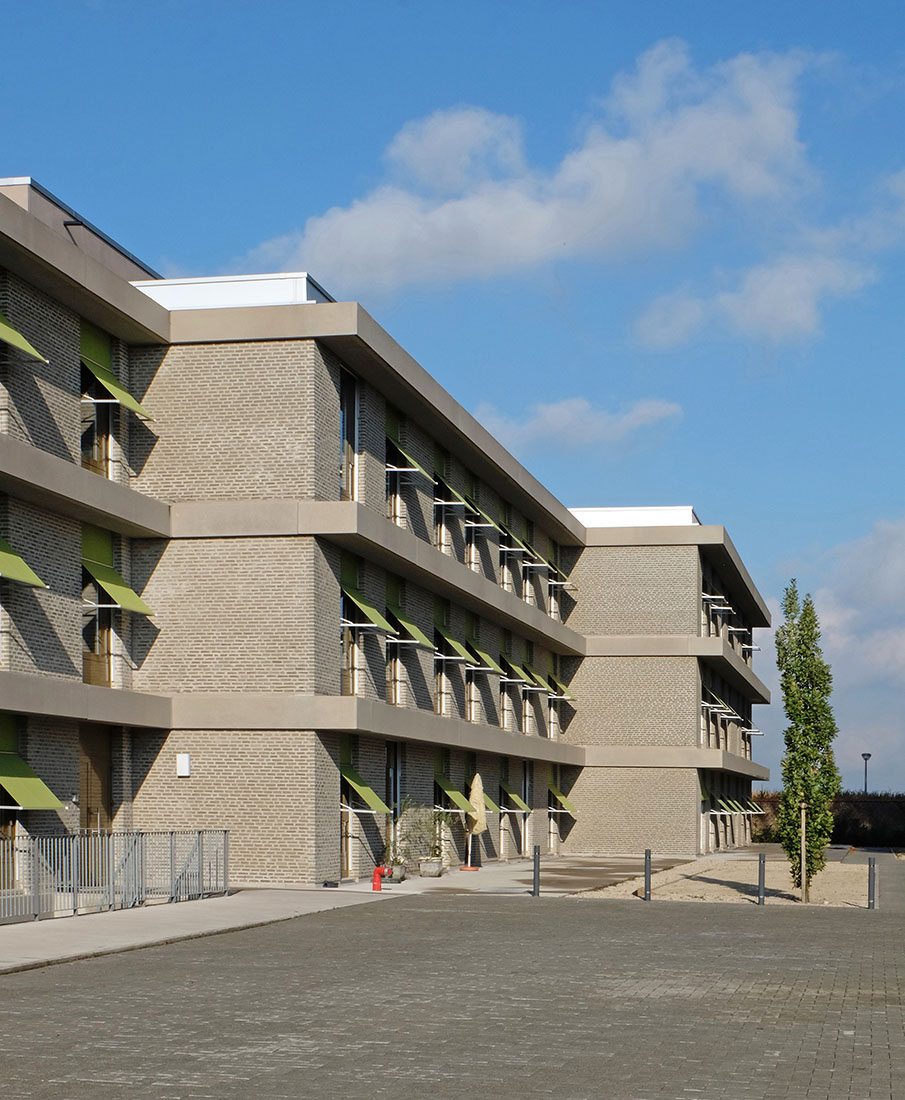 |
 |
 |
 |


Care Home
Kloosterstraat, Huise-Zingem
2004 - 2011
The Care Home in Huise-Zingem is destined for the elderly in Flanders and is the result of an architectural competition, won by Sergison Bates Architects in 2004. The project was funded by the Flemish Government, so that the complex had to meet specified criterias for a care facility. Criterias which had to be fulfilled in order to meet the accredited status influenced the spatial organization of the interior and the space allocation per resident.
The Care Home is located in a rural area, embedded into an agricultural environment. The small village Huise is recognizable from distance by its location on a bank of high grounds and its lines of trees which mark the borders. Historically Huise was regarded as a local point of reference for the surroundig hamlets, providing them with a school, church, convent, orphanage and market square. The significance of the small town changed a lot with the recent socio-economic developments. The design by Sergison Bates is strongly related to the neo-classical main building on the site and the brick walls bordering the garden. The mentioned architecture of ne-classical style is the former orphanage which is today used by the school and the care home.
On the exterior the care home is of strictly horizontal emphasis, related to the walled garden environment and the flat polder landscape beyond the garden. The facade is horizontally structured by the rails of pre-cast concrete which project over the building envelop and which are running all around the building on each level. Alternately wide slabs of brick masonry and full height windows are positioned between these concrete rails, creating a repetitive order. The repetition of the elements is adjusted to the interior organisation when ever necessary.
The three storey volume of the Care Home is organized into three adjoining building wings, stepped in plan to reduce the impact on its environement. This design attitude successfully gives a sense of reduced scale to the care home, which in fact is the largest building in the town. The three wings are articulated by two central courts which are open to the sky. The rooms and studio apartments for the residents are arranged in clusters along the perimeter. The central wing contains a single large communal living room on each of the three floors. Layout of this area, which is near to the staff and support facilities, not only allows for views into the landscape but also to the adjacent courts. This communal room is conceived as a continuous interior landscape togehter with the corridors.